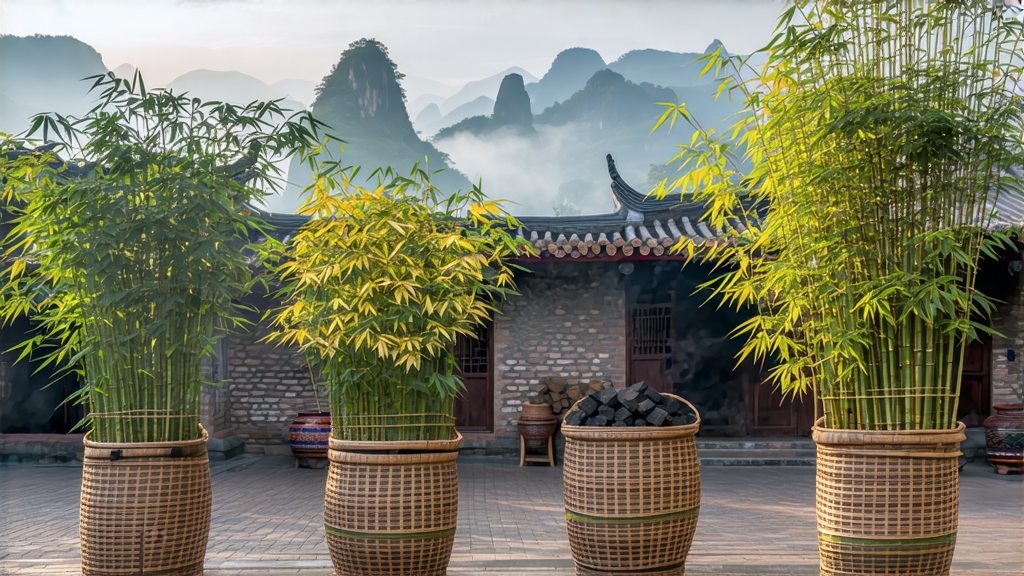
Tucked high in the mist-veiled Dabie Mountains of western Anhui Province, a tea once reserved for emperors quietly continues a 2,000-year dialogue between leaf and time. Huoshan Huangya—literally “yellow bud from Huoshan”—is the least-known member of China’s six great tea families, yet it carries the most delicate secret in the pantheon of Chinese tea: the art of “menhuang,” a slow, breath-controlled smothering that turns green into gold. To international drinkers who thrill at the velvet depths of Keemun or the rocky mineral bite of Wuyi oolong, Huoshan Huangya offers a different epiphany: a liquor the color of morning sunlight on bamboo, a fragrance that moves from orchid to roasted chestnut in a single breath, and a sweetness that lingers like the last chord of a guqin.
History: From Han Dynasty Tribute to Republican Relic
The first written record appears in the Han-era geographical treatise Huoshan County Annals (110 BCE), which describes mountain monks presenting “bud tea of golden hue” to the imperial courier station at nearby Shouchun. By the Tang dynasty (618-907 CE) the tea had become a fixed item on the Jiannan tribute list, traveling 1,400 km by horse and canal to Chang’an. Song emperor Huizong, himself a skilled tea connoisseur, praised its “amber clarity” in his Daguan Tea Treatise, noting that the leaf could withstand seven infusions without astringency—a benchmark still quoted today. The Ming rebuilt the mountain temples and granted the tea gardens tax-exempt status; the Qing Qianlong Emperor, during his 1751 southern tour, reportedly refused all other beverages once he tasted Huoshan Huangya at the Jinxing Temple. The 20th century brought war and market collapse: the delicate processing was abandoned in 1938 when the county became a guerrilla base against Japanese occupation. Rediscovered in 1972 by a team of Anhui agronomists who found one aged master alive in the village of Foziling, the tea was revived using a single 400-year-old mother tree. In 2008 it received China’s GI (Geographical Indication) protection, and since 2015 small batches have been quietly appearing at European specialty fairs, where they astonish tasters who thought they knew every Chinese tea.
Terroir: Why the Dabie Mountains Create Yellow
Huoshan county lies at 31° N, 800–1,200 m above sea level, inside the North–South climate transition belt. The annual average of 15.8 °C, 1,800 mm precipitation, and 68 % humidity produces a 240-day fog season. The cloud cover scatters sunlight into softer, longer wavelengths, increasing amino acids—especially L-theanine—while slowing polyphenol development. Soils are Phyllite-derived sandy loam, rich in selenium (0.45 mg kg⁻¹) and zinc, drained steeply so roots struggle, concentrating flavor. The indigenous cultivar, Huoshan Da Bai Hao (“Big White Down”), has unusually thick cell walls that withstand the repeated rolling and smothering of yellow tea without breaking, yet remain pliable enough to allow the slow non-enzymatic oxidation that creates the characteristic yellow hue.
Harvest Calendar: One Spring Week, Three Grades
Picking begins when 5 % of the garden reaches “one bud with one leaf just unfolded,” usually between 5–12 April, and finishes within seven days. Grade 1 (Te Gong, Imperial) requires 100 % single buds, 15 mm length, 3 g weight per 100 buds. Grade 2 (Yi Ji, First) allows one leaf shorter than the bud. Grade 3 (Er Ji, Second) permits two leaves still clasping the bud. All plucking is done before 10 a.m., when dew has evaporated but mountain chill remains, keeping enzymatic activity low. A skilled picker gathers only 250 g fresh leaf per hour; 46,000 buds are needed for 500 g finished Imperial grade.
Craft: The Secret of Menhuang
Unlike green tea’s immediate kill-green, yellow tea is coddled into maturity through “menhuang” (literally “yellow sealing”), a two-stage smothering that edges the leaf toward oxidation without ever crossing into black tea territory.
Step 1: Sha Qing (Kill-green)